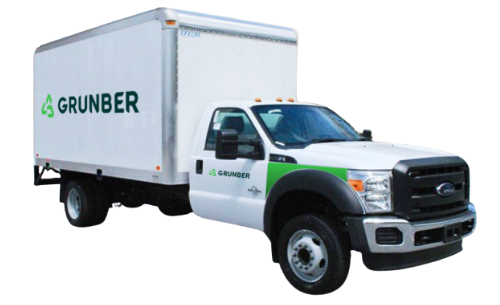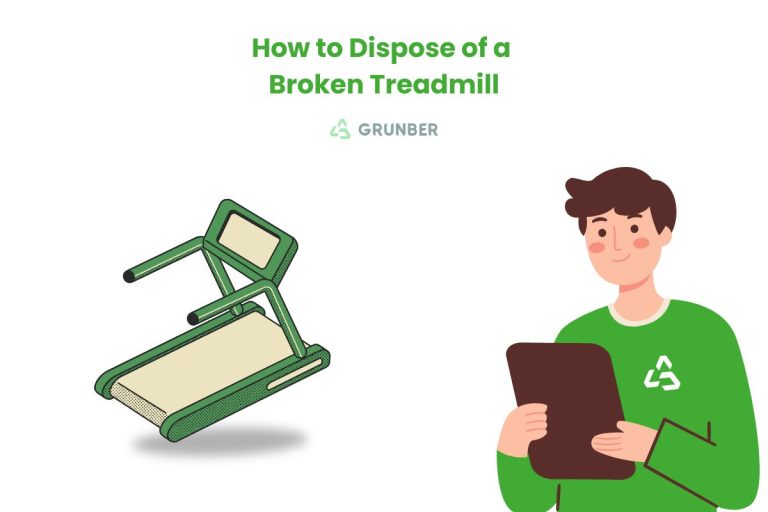When it comes to managing kitchen waste, garbage disposals have long been hailed as a convenient solution. But as soon as you decide to purchase or replace one, a question pops up: Are garbage disposals universal? Do they fit every kitchen sink, or is there more to consider?
In this guide, we’ll delve into what “universal” really means in the context of garbage disposals. We’ll talk about sizing and compatibility, address common myths, and explore installation factors that influence how well a disposal unit will fit under your sink. By the end, you’ll have a clear picture of whether a garbage disposal is the right choice for your home—and how to choose one that’s compatible with your setup.
You may also be interested in:
Table of Contents
Understanding Garbage Disposals
A garbage disposal (sometimes called a waste disposal unit) is an appliance installed beneath your kitchen sink. Its purpose is to grind and break down food waste into tiny particles, which then flow through your plumbing system. Contrary to popular belief, these appliances don’t use sharp blades like a blender. Instead, they rely on impellers (small rotating metal pieces) that fling food scraps against a grinding ring, pulverizing them into slurry.
Key Benefits:
- Convenience: Quickly disposes of leftover food, reducing trips to the trash bin.
- Odor Reduction: Fewer food scraps lingering in the garbage means fewer unpleasant smells.
- Environmental Impact: When used properly, garbage disposals can divert organic waste from landfills, potentially easing the load on waste management systems.
The Myth of Universality: Do All Disposals Fit All Sinks?
When people ask, “Are garbage disposals universal?” they’re often wondering if any model will install seamlessly beneath any kitchen sink. The simple answer? Not exactly. While most disposals are designed to fit a standard 3.5-inch drain opening, there are other aspects—such as overall unit size, horsepower, mounting systems, and plumbing setups—that determine compatibility.
Yes, the standard sink drain opening is fairly consistent, but “universal” doesn’t account for:
- Varying cabinet dimensions
- Unique plumbing layouts
- Electrical connections
- Homeowners’ personal needs (e.g., large families vs. single-person households)

Factors Affecting Compatibility
Cabinet Space and Plumbing Layout
The space under your sink isn’t the same in every home. Some cabinets have deep storage shelves, complex piping, or extra filtration systems that can limit the space needed to accommodate a larger disposal. If you have limited real estate beneath your sink, you may need to choose a compact or low-profile disposal model.
Drain Size Standardization
Although most kitchen sinks feature a 3.5-inch drain opening (the industry standard), older or custom sinks might deviate from this measurement. Always measure the circumference of your drain and check your sink’s manual (if available) before buying.
Electrical and Septic Requirements
- Electrical: Disposals need a dedicated power source. Some kitchens have an outlet beneath the sink; others might require electrical work to install one.
- Septic Systems: If your home relies on a septic tank, you’ll need to ensure that adding a garbage disposal won’t interfere with the system’s capacity or efficiency. Certain disposals are specifically engineered for septic use, often featuring built-in bio-charge cartridges.
Types of Garbage Disposals
Garbage disposals generally come in two main varieties:
- Continuous Feed
- Operation: Runs continuously once switched on. You can keep adding food scraps while it’s grinding.
- Pros: Convenient for households that generate a lot of food waste.
- Cons: Slightly higher safety risk, as it operates openly. Careless use can lead to objects falling in while running.
- Batch Feed
- Operation: Activated by a special stopper; only grinds waste placed in the chamber with the stopper in place.
- Pros: Safer for families with children, because it won’t run without the stopper locked in.
- Cons: Slower and less convenient if you have large amounts of waste to handle in one go.
Safety Features and Common Misconceptions
any people worry about the possibility of “blending fingers” or catastrophic injuries. In reality:
- No Sharp Blades: Disposals use impellers and a grinding ring, not razor-sharp blades.
- Automatic Shutoff: Most modern models have overload protection. If the motor senses resistance (e.g., a jam), it can shut down automatically to prevent overheating.
- User Caution: As with any appliance, it’s still wise to power off (or unplug) a disposal before fishing out items that fall in.
Choosing the Right Power Rating
Garbage disposals typically range in horsepower (HP) from 1/3 HP to 1+ HP, and this spec directly affects how much food waste your unit can tackle—and how much real estate it will claim under your sink. Here’s a closer look:
| HP Range | Best For | Why Choose It | Heads-Up |
| 1/3 HP | – Individuals, couples, or households that don’t cook elaborate meals | – Compact size, lower cost – Great if you rarely toss more than the occasional veggie peel | – May struggle with denser scraps (e.g., small bones, fibrous veggies) – Frequent cooks might need more muscle |
| 1/2 HP – 3/4 HP | – Small to medium families who often prepare homemade meals | – Adequate power for typical leftovers, fruit rinds, and moderate scraps | – If you often host big dinner parties or discard tougher items (like poultry bones), consider going for higher horsepower |
| 1 HP and Above | – Large families, avid cooks, or light commercial settings (e.g., small cafés) | – Superior grinding power – Fewer clogs – Handles fibrous or bulky scraps smoothly | – Larger, heavier, and pricier units – Ensure your under-sink cabinet can support the weight and dimensions before you buy |
Learn more about the garbage disposal unit.
Buying Tip:
- Measure, measure, measure. A powerful disposal is only helpful if it physically fits under your sink.
- Think about your cooking habits—if you mostly reheat last night’s pizza, you can probably skip the 1 HP monster. If your blender’s working overtime and your chopping board is perpetually covered in veggie scraps, investing in higher horsepower may save you a few headaches.
Installation Overview
Installing a garbage disposal might seem like a heroic DIY project—and sometimes it is—but a little professional help can go a long way in avoiding leaks, short circuits, or that “why is water spraying my face?” moment. If you’re game to tackle it yourself, here’s the general process:
- Prep the Area
- Clear Out the Cabinet: Remove your cleaning supplies, the unopened cereal box you forgot, and anything else that might get in the way.
- Cut the Power: If your disposal will be hardwired, switch off the corresponding circuit breaker. If you’re plugging into an outlet, just ensure the outlet isn’t live. (Yes, you can test it by plugging in a lamp—but do so carefully. No sense testing your luck.)
- Mounting and Flange
- Apply Plumber’s Putty: Create a watertight seal by rolling a rope of putty around the sink’s drain opening.
- Press in the Sink Flange: Gently push the flange into place and wipe away any excess putty that squeezes out.
- Attach the Mounting Assembly: From beneath, secure the assembly per the manufacturer’s instructions. Think of it like building a Lego set—except with fewer colorful bricks and more metal rings.
- Attach the Disposal
- Align & Lock: Lift the disposal unit, match it to the mounting ring, and give it a firm twist to lock in. If it doesn’t click or feels off, don’t force it—reposition and try again.
- Pro Tip: Keep your phone or a mirror handy so you can see what you’re doing without craning your neck into a pretzel.
- Plumbing and Power
- Discharge Pipe: Connect the disposal’s discharge tube to your kitchen drain line. If your dishwasher drains into the disposal, knock out the dishwasher inlet plug and attach the dishwasher hose.
- Electrical Hookup: If there’s an outlet under the sink, plug in the disposal. Hardwiring? Carefully match up wires according to the disposal manual. If the thought of wiring fills you with dread, it might be time to call an electrician (or your bravest friend).
- Testing
- Water & Switch: Turn on the water (cold, ideally) and flip the disposal switch.
- Listen Carefully: A smooth hum is good; rattling, grinding, or gargling might mean something’s off.
- Check for Leaks: Run your hand around the unit and pipe connections. If you feel a damp patch, tighten fittings or adjust seals until the drip disappears.
Bonus Tip: When in Doubt, Don’t Freak Out
- If you’ve got leftover parts or you hear ominous clanging, it’s time for a quick call to a plumber. Remember, it’s better to pay a professional once than to pay for repairs twice.
Frequently Asked Questions (FAQ)
Q1. Are garbage disposals universal in size?
Most disposals fit a standard 3.5-inch drain, but cabinet space, plumbing layout, and unit dimensions vary. Measure under-sink space before purchasing.
Q2. Do garbage disposals have blades that can cut your fingers?
They don’t use razor-sharp blades—just impellers that grind waste against a grinding ring. Nonetheless, disconnect or switch off the power before reaching inside.
Q3. Can I install any disposal on a septic system?
Some disposals are septic-compatible, often featuring additional waste-processing technologies. Always verify your septic’s capacity and local regulations first.
Q4. Is higher horsepower always better?
Higher HP models can handle tougher waste but also require more space and tend to cost more. Choose a unit based on your cooking habits and household size.
Q5. Do I need a plumber to install a garbage disposal?
Not necessarily, but professional installation is recommended—especially if electrical or complex plumbing changes are needed.











